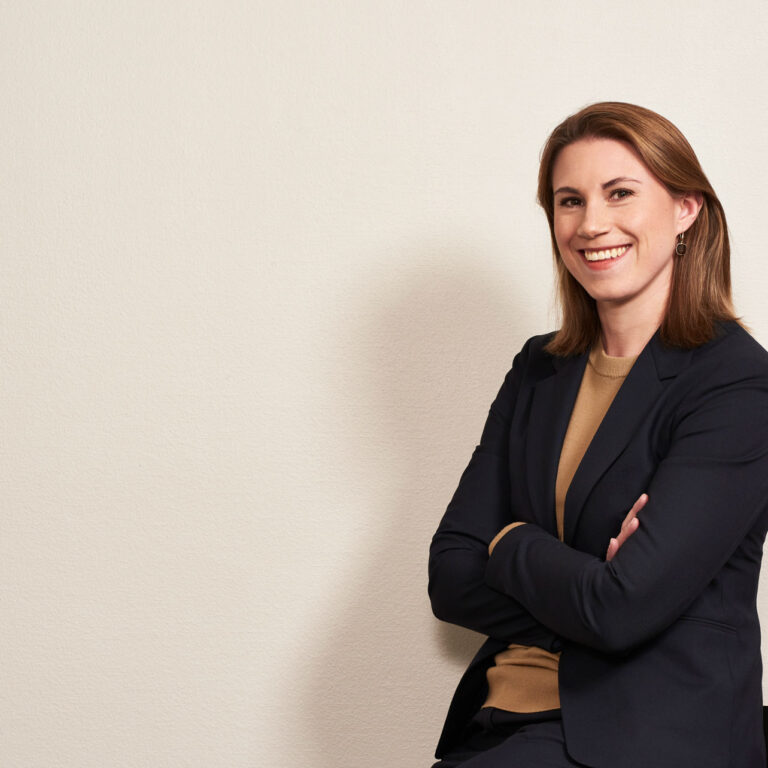D&I’s annual merger control report highlights the most recent trends and developments in Finnish merger control enforcement. Although it was expected that 2021 was just calm before the storm, 2022 actually seemed to prolong the relative serenity of the Finnish Competition and Consumer Authority’s (“FCCA”) enforcement activity after some more eventful earlier years. Most of the FCCA’s activity in 2022 was in line with its enforcement practice of the previous year. For example, there were no proposals to prohibit concentrations, no declarations of incomplete notifications and no stop-the-clock decisions in 2022.
However, one Phase II case in particular was burdensome for the FCCA and the parties alike, with the parties eventually modifying the transaction so that it fell outside of the jurisdiction of the FCCA. Moreover, the several legislative amendments adopted in the end of 2022 – namely lower notification thresholds and the new notification form – signal a busy 2023 for the FCCA and everyone else involved in Finnish merger control.
Summary of the rules on review periods
In this chapter, we briefly go through the rules on review periods in Finland to give some background to what will be said later. The year 2022 brought no changes to these rules, so if these rules are familiar, you may move forward to the next chapter.
After receiving a complete notification of a concentration from the notifying party (or parties), the FCCA has 23 working days at the so-called initial stage (“Phase I”) of its investigation to decide that the concentration does not fall under the Competition Act, to approve the concentration with or without commitments, or to decide that the concentration raises significant competition concerns and warrants an in-depth scrutiny during a further investigation stage (“Phase II”). Phase II extends over a period of max. 69 working days, which can exceptionally be further extended by up to 46 working days by the Market Court at the request of the FCCA. At the end of Phase II, the FCCA must either approve the concentration with or without commitments, or request the Market Court to prohibit it.
If the FCCA has submitted its prohibition proposal to the Market Court, the Market Court has 69 working days to clear the concentration with or without commitments or to prohibit it. A decision issued by the Market Court may be appealed to the Supreme Administrative Court within 30 days. The length of such appeal proceedings in the Supreme Administrative Court is not set in law.
If the parties do not provide in time the information the FCCA has asked for, or the information provided is substantially insufficient or incorrect, the FCCA may extend the review periods in both Phases I and II with the number of days the information requested is late (“stop-the-clock”).
If the notification is substantially insufficient, the 23 working day review period of Phase I does not begin to run until sufficient information is provided (“incomplete notification”). Sometimes the FCCA has declared a notification incomplete at quite a late stage of the procedure, once even towards the end of Phase II.
2022 in numbers
In many ways, 2022 was rather similar to its predecessor. The 35 notifications of 2022 kept the total amount of notifications at the usual level. The amount of notifications was 33 in 2021, 23 in 2020 (a pandemic exception) and again 33 in 2019 (see the Alerts regarding 2021 here, 2020 here and 2019 here).
The FCCA issued a total of 38 decisions during the year. Out of this, 34 cases were non-conditional approvals in Phase I. Unlike the European Commission (the “EC”), the FCCA does not provide merger control statistics. However, D&I has compiled and kept up-to-date detailed statistics on Finnish merger control cases since the merger control rules in Finland entered into force in autumn 1998.
In 2022, the FCCA concluded altogether four Phase II reviews, two of which were initiated already in 2021. In 2022, the FCCA initiated three Phase II reviews which is just shy of 9 % of the notified cases. Of the Phase II reviews it concluded in 2022, the FCCA approved two cases without conditions and two subject to them, while one Phase II review initiated in 2022 did not result in a decision due to the parties amending their transaction during the FCCA’s review to escape the FCCA’s jurisdiction (see below). The ratio of initiated Phase II cases to notifications has decreased in recent years, since the percentage was 13 % in 2021 and 17 % in 2020. Naturally, almost any changes in the number of notifications and especially Phase II cases affect the percentages quite heavily due to the low absolute numbers.
Horizontal concerns continue to be resolved with divestments
The Phase II reviews of 2022 reflect most of the trends outlined in our previous reports. It is still the FCCA’s publicly spoken view that competition concerns concerning horizontal overlaps need to be primarily addressed with structural remedies. In both Phase II cases in 2022 in which it imposed remedies, the FCCA ordered divestments.
According to the FCCA’s outspoken view, structural remedies must be implemented either in a manner that leaves the risk for finding a suitable buyer to the parties to the transaction, or in a manner that such risks never materialize. Moreover, even though fix-it-first remedies are possible (and used for the first time ever in 2022 in Mehiläinen/Fysios), the FCCA considers that they are more problematic to be implemented due to the strict time limits for the FCCA’s investigations. Therefore, the FCCA has stated that it continues to prefer up-front buyer remedies (see our Alert regarding 2021 here).
The FCCA has signalled that it will introduce new instructions on its approach to remedies in the beginning of 2023, and it is likely that this guidance will closely reflect the FCCA’s decisional practice described above.
Comeback of non-conditional approvals in Phase II reviews
The non-conditional approvals of Phase II cases signal a downward bump in the rise of conditionally cleared Phase II cases that was discernible during the three-year period between 2019 and 2021. While being 100 % over the three previous years, the FCCA’s intervention rate (imposing remedies or proposing prohibitions) in Phase II cases fell to 50 % in 2022. In both of these cases, however, the FCCA’s investigative measures appear to have been extensive. In Pihlajalinna/Pohjola Sairaala, an investigation where it assessed the market for health services offered to insurance companies, the FCCA utilized data from the Finnish Social Insurance Institution covering several years. In Lantmännen/Sponmill, a review concerning the sale of frozen baked goods to retailers and foodservice customers, the FCCA carried out two surveys, one for consumers and one for producers, and acquired detailed sales data covering several years from the largest actors in the retail and foodservice sectors.
A transaction escapes the FCCA’s jurisdiction in the middle of the review
Helen/LämpöYkkönen concerned a joint venture, notified in July 2022, between Helen, an energy company owned by and active in the area of the city of Helsinki, and LämpöYkkönen, a provider of, inter alia, heating pumps. The FCCA initiated a Phase II review based on its preliminary concerns related to conglomerate effects, since anyone wishing to install heating pumps in conjunction with Helen’s district heating were required to seek an approval for the installation from Helen. According to the FCCA, Helen would thus have had the ability and, after its entry into the heating pump market through the joint venture, the incentive to hinder the activities of competing heating pump providers in Helen’s network area.
Arguing that this conglomerate link between the parties came to its attention only at the end of its Phase I review, the FCCA applied for and – despite the parties’ objections – received from the Market Court a maximum extension of 46 working days to conduct the Phase II review. However, due to the cumbersome process at the FCCA, the parties decided to abandon their transaction in its planned form.
The parties subsequently completed the transaction by Helen acquiring sole control in a newly established company to which LämpöYkkönen first transferred the business that was initially supposed to be the focus of the jointly controlled joint venture. The transaction was originally notifiable to the FCCA since when transferring business to a new jointly controlled full-function joint venture, the turnovers of all of the parties that will control the joint venture are relevant, and Helen’s and LämpöYkkönen’s turnovers exceeded the turnover thresholds. However, since the transaction was amended to an acquisition of sole control, the relevant turnovers that had to be taken into account were that of the acquirer (i.e. Helen) and the target (i.e. the newly established company) only. Since the target’s individual turnover from Finland was below the then applicable turnover threshold, there were no longer the required “at least two” parties whose turnover exceeded the relevant threshold. Consequently, the amended transaction fell outside the FCCA’s jurisdiction.
The case was exceptional also since the FCCA very rarely signals competition concerns relating to conglomerate effects. In Helen/LämpöYkkönen, the conglomerate effect resulted from a technical connection not directly attributable to a horizontal or vertical relationship. Most of the FCCA’s interventions concern horizontal competition concerns, and even vertical concerns are rare.
Moreover, the length of the extension to the Phase II review period the FCCA applied from the Market Court was relatively rare since the FCCA immediately applied for a maximum 46 working day extension. Usually, the FCCA tends to apply first for a shorter extension and, if need be, apply for another. In case the parties object the extension, as in this case, the Market Court may accept the FCCA’s application only if there are ‘weighty grounds’ for an extension. In this case, the Market Court seemed to have accepted that the fact that the FCCA found out about the possible competition concern only in the market testing towards the end of its Phase I review constituted a ‘weighty ground’ for extending the FCCA’s Phase II review period. The Market Court also referred to the FCCA’s arguments stated in the extension request dated only a few days prior to the original end of the Phase II review period, according to which inter alia the FCCA did not know whether the parties would offer commitments or whether possible solutions to its competition concern would be sufficient, and that a shorter extension than requested would not have been enough.
While this is not the first time that parties to a concentration adapt their transaction during the FCCA’s review in order to avoid the Authority’s intervention, such instances (in the public knowledge) are quite uncommon in Finland. To our understanding, this is only the second time this has happened during the last five years. However, the last time it happened, the parties also referred to the lengthy process at the FCCA as a reason for amending their transaction (see our Alert regarding 2020 here).
2022 introduced many changes that apply as of 1 January 2023
As we wrote in October 2022 (see here), there were proposals for significant changes in Finnish merger control in 2022, as the national merger control turnover thresholds were to be lowered, and the notification form as well as the FCCA’s guidelines for merger control were undergoing a review. The new turnover thresholds and notification form have now been implemented, have entered into force and are fully applicable. The new turnover thresholds apply to transactions signed on or after 1 January 2023, whereas if the transaction was signed prior to this, the old notification thresholds apply. The new notification form applies to all concentrations that are notified as of 1 January 2023 irrespective of the signing date. The FCCA has also issued some new guidance concerning its merger control practices, but the anticipated guidance concerning remedies is still under its consideration.
The new merger control thresholds constitute a fully Finnish 100+10 rule, meaning that concentrations between parties whose combined turnover from Finland exceeds EUR 100 million and of which each of at least two generate a turnover of at least EUR 10 million from Finland need to be notified to the FCCA. Previously, concentrations were notifiable if the combined global turnover of the parties to a concentration exceeded EUR 350 million and each of at least two of the parties had a Finnish turnover exceeding EUR 20 million. It is estimated that the amount of notifications to the FCCA will double.
In connection with the reform of the Finnish merger control rules, the possibility for the FCCA to require a notification of a concentration below the notification thresholds was largely discussed. The FCCA had originally proposed and advocated for this right during the reform process, but it was ultimately abandoned due to resulting uncertainties for future transactions.
In addition, as said, the notification form for concentrations (which is an attachment to the Government Decree on the obligation to notify concentrations) has been renewed. It aims to simplify case handling and ease the information requirements for cases with no horizontal overlaps or vertical connections between the parties’ operations. However, there are also new requirements for information, such as the examination of all potential alternative market definitions and potential competition. The new notification form brings the requirement of information and analysis that must be provided to the FCCA in the notification closer to the EU Form CO and the notification forms applied in Sweden and Denmark.
Updates regarding the EC’s scrutiny for transactions falling below national notification thresholds
Regardless of the above-mentioned exclusion of the FCCA’s right to require a notification even when the thresholds are not met, the possibility for a transaction below national filing thresholds to fall under a competition authority’s scrutiny emerged in a new way at the European level after the General Court (“GC”) confirmed the EC’s new approach to the application of the referral mechanism set out in Article 22 of the EU Merger Regulation (for more detail on the new approach, see our Alert from May 2021 here). In its judgment in July 2022, the GC held that the EC was right to accept a referral from several EU Member States’ competition authorities to examine Illumina’s acquisition of Grail, even though the transaction was not notifiable in any of the requesting Member States. Moreover, the GC held that, in order for the time limit of 15 working days for the Member States to make a request for the EC to start running, the Member States need to be actively submitted information on a transaction that enables them to assess whether they could refer that transaction to the EC.
This means that neither the Member States (nor the EC for that matter) are under an obligation to seek out information concerning transactions they might want to refer to the EC for examination. The EC’s guidance from 2021 states that parties to a transaction may approach the EC for an indication that their transaction does not constitute a “good candidate for a referral”. However, receiving such an indication presupposes the submission of “sufficient information” to make such an assessment, and the guidance does not give any examples of what might qualify as “sufficient information”.
The EC ended up prohibiting Illumina’s and Grail’s transaction in September 2022, on the basis that by acquiring Grail Illumina would have extended its position to the downstream market, and consequently would have had the ability and incentive to stifle innovation and reduce choice in the emerging market for blood-based early cancer detection tests. In December 2022, the EC issued a Statement of Objections requiring that the transaction (which the parties had implemented without clearance) be unwound, and proposed a set of restorative measures, including divestments and transitional measures. The case is still very much ongoing, with the EC investigating the parties’ alleged gun jumping, and the first decision ordering interim measures to keep the parties separate has been appealed to the GC. Furthermore, unsurprisingly, Illumina has appealed also the above-mentioned judgment of the GC of July 2022.
Conclusions
While the Finnish merger control enforcement in 2022 did not have any exceptionally eventful episodes, the renewals it introduced promise for busy times ahead. One could say that nearly everything regarding notifying transactions to the FCCA has now been updated, so we are looking forward to seeing how this all plays out in practice in 2023 and onwards. An especially interesting aspect to follow is whether the substantially increasing amount of notifications will directly translate into a higher amount of interventions by the FCCA and how the FCCA will manage to cope with double the amount of cases in the first place. Even though until now the relatively high thresholds have kept the amount of notifiable transactions to the FCCA lower than to its Nordic counterparts, the FCCA has had the tendency to initiate Phase II investigations more often, and the amount of its interventions has been higher than that of for example the Swedish competition authority.
While the FCCA was ultimately not granted the right to require below-threshold transactions to be notified, the EC’s new policy concerning the acceptance of referrals increases legal uncertainty as to when do Member States have the possibility to refer a case to the EC as well as the need to examine the competitive effects of a contemplated transaction more closely, especially in the digital economy and pharmaceutical sector.
Even though the notification process underwent a near-total renewal, other aspects of the FCCA’s practice seem unchanged – the reviews are data-intensive, structural remedies are the principal way to address horizontal concerns, and, especially in light of Helen/LämpöYkkönen, the investigations might prove burdensome and their outcome somewhat uncertain. While the renewed notification form should ease the process for cases without competition concerns, should the FCCA spot any competition concerns, be they horizontal, vertical, or conglomerate, the opposite might prove to become true.


